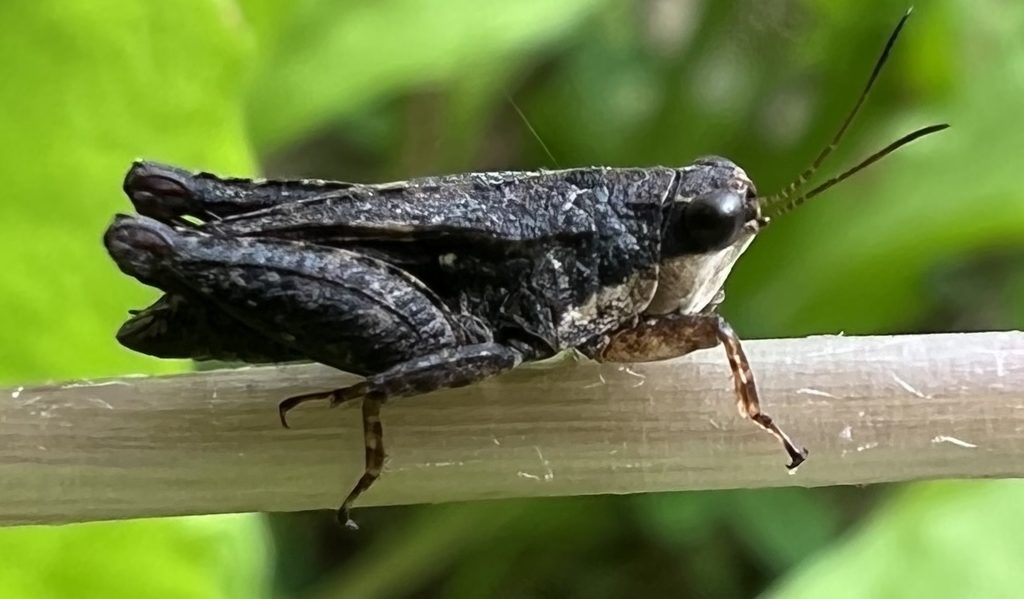
Black-sided Pygmy Grasshopper (Tettigidea lateralis) © Jewelwing66 (iNaturalist)
The Black-sided Pygmy Grasshopper is one of the pygmy locusts, so called because they are the smallest representative of the family. It is found in eastern and central North America (including southern Canada), west to Arizona and Colorado, and south into Mexico and Central America.
It lives in wet, sedgy meadows, especially on sandy soil, and deciduous and coniferous forests. It feeds upon plant matter such as algae, lichen, mosses, young grasses, germinating seeds of plants.
It is also called Sedge Grouse Locust.
Conservation Status
Vermont:
Global: G5
Phenology
iNaturalist shows observations January – December, with two peaks: The largest peak occurs in April-May with a smaller peak August-October.
The nymphs are common in midsummer, the adults are more plentiful in early fall and again in the spring (Morse, 1920).
More Information
Vermont Distribution
All Records:






